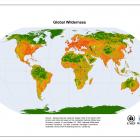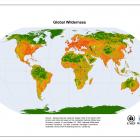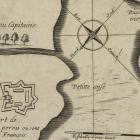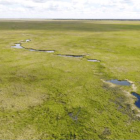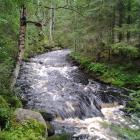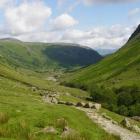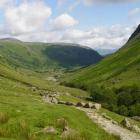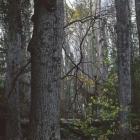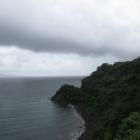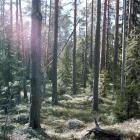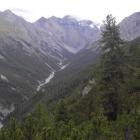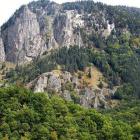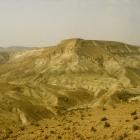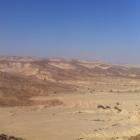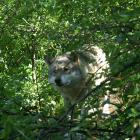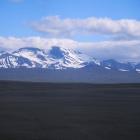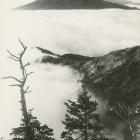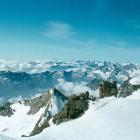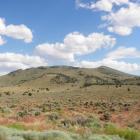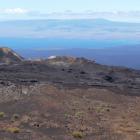Arava, Eretz Bereshit, Midbar, and Shmurat Teva—Modern Hebrew
Arava (ערבה)
Eretz bereshit
Midbar (מדבר)
Shmurat teva
A bilingual dictionary offers a number of Hebrew synonyms for “wilderness,” including Midbar (מדבר), Yesimon (ישימון), Arava (ערבה), and Shmama (שממה). The Hebrew popular dictionary Even-Shushan offers fuller definitions: Midbar—a desert; a dry and arid area, with less than 200 mm of rain per year and scarce vegetation but diverse animal species. Yesimon—a dry and desolate place. Arava—a dry land; a flat area with low-lying vegetation. Shmama—a wasteland.
The live site contains audio files of the pronunciation of the modern Hebrew terms Arava, Eretz bereshit, Midbar, and Shmurat teva.
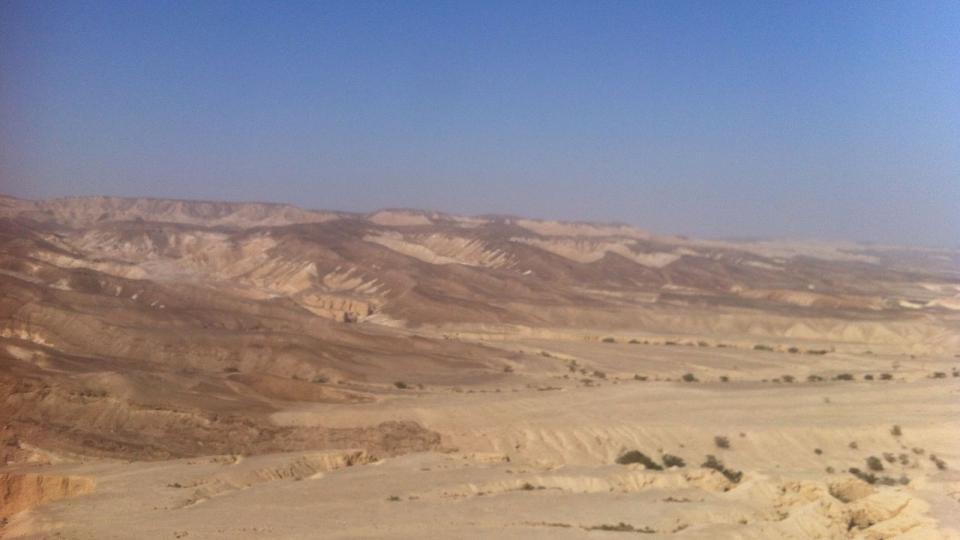
The Negev desert. Photograph by Livnat Goldberg, n.d.
The Negev desert. Photograph by Livnat Goldberg, n.d.
Photo: Livnat Goldberg.
 This work is licensed under a Creative Commons Attribution-NonCommercial-ShareAlike 3.0 Unported License.
This work is licensed under a Creative Commons Attribution-NonCommercial-ShareAlike 3.0 Unported License.
While the English concepts of “wilderness” focus on wildness, or perhaps rich biodiversity and the quality of being unmodified by civilized human activity, wilderness counterparts in Hebrew mostly emphasize dryness. The absence of humans is a secondary characteristic of Hebrew wilderness. In the Hebrew mind, wilderness suggests an uninhabited place lacking any water.
Intuitively, I would substitute “wilderness” by praee (פראי), which might be translated back into English as “the wild.” In addition, when defining an “undisturbed” area, a Hebrew speaker would say ezor lo mufar (אזור לא מופר), an unaltered space. In a more sentimental and romantic way, an undisturbed area could be described as eretz bereshit, or the land of Genesis. Eretz bereshit is associated with wilderness, yet the noun of wilderness still refers mostly to a desert land.
In 1968, one of the first Israeli environmentalists, Abraham Shaked, described the land of Genesis as an
untouched, undisrupted large area, where dimensions are part of its identity. In Israel, the desert and the Negev region meet this definition. It includes the area’s natural flora and fauna and a few human inhabitants whose traditional land-uses have not disturbed the equilibrium … [T]his region is valued for its physical, mental, and spiritual experience. Here there is a total freedom to live or die, to breathe clean air, to get lost in vast spaces without any purpose except for the experience itself, to feel the forces of nature, where an undisturbed equilibrium is the true expression of absolute morality… . [I]n the Land of Genesis, far from ‘civilization’, one experiences the primary sources, the foundations of creation, one’s identity for understanding one’s true values… . We are currently facing the extinction of these Lands of Genesis, here and across the entire planet, and so we are also losing forever this opportunity to experience these places.
Although not exactly the same as the land of Genesis, a close Israeli counterpart would be the nature reserve concept, termed Shemourat Teva (שמורת טבע), with its definition being “a land defined as protected from processes that may change wildlife, vegetation and inanimate characteristics.”
The first movement for creating a nature reserve for specifically preserving its natural traits happened around 1950, following the desiccation of a large lake called Hahula. This was the first of 375 nature reserves that now cover over 5,317 km2. However, in the south of Israel, in the Juda Midbar, in Negev, and in the Arava, one finds versions of the Eretz Bereshit (or romantic wilderness), which more closely approach “wilderness” in the sense it is used in English: these are wild deserts.

A rock formation in the Judean Desert. Photograph by Livnat Goldberg, n.d.
A rock formation in the Judean Desert. Photograph by Livnat Goldberg, n.d.
 This work is licensed under a Creative Commons Attribution-NonCommercial-ShareAlike 3.0 Unported License.
This work is licensed under a Creative Commons Attribution-NonCommercial-ShareAlike 3.0 Unported License.
One reason why the term wilderness in Hebrew is closely associated with drought and dryness may be the fact there are no wholly wild areas in Israel, at least from an English speaker’s perspective. Being a small country with a continuous flux of immigration, where every single bit of land is evaluated for its settlement potential, only the most arid areas are able to remain undisturbed by human activity. Almost any other area will in some way be fragmented and modified by human intervention.
In 1955, the first prime minister of Israel, David Ben Gurion, established the still commonly used Hebrew expression, translated literally as “the revival of wasteland.” This statement implies a negative view of wasteland, so that one must “give life” to it in order to make it more appealing for human habitation. His vision was that “the state of Israel cannot tolerate a condition of maintaining a desert inside it. If the state can’t defeat the desert, then the desert might defeat the state.” Of course, his declaration needs to be viewed in the context of the day, shortly after the birth of the country, with its demographic challenges and immediate needs to settle new immigrants, many with a European background who became the founding fathers of the country.
The desert is a popular allegory and subject in Hebrew poetry and songs. In most cases, the translation of wilderness—as desert, wasteland and sword—is used to describe the power of nature, solitude, emptiness, silence, modesty, and similar attributes.
Biblical Foundations
The words used to denote wilderness in the Bible offer more clues to its meaning in Hebrew. In the Old Testament, a common term in this context is Midbar, which originally seems to denote “pasture,” a place where flocks are led. Other common words used for related descriptions are Yesimon, Arava, Horbâ (חורבה)—a wasteland—and Shmama, a word connoting desolation. Eres siyyâ (ארץ ציה), or “dry land,” also functions as a synonym for wilderness.
“Wilderness” in the Bible refers mainly to two distinct locations: the desert area where the Israelites traveled between their Exodus from Egypt and their entry into the Promised Land of Canaan; and the relatively bare, uncultivated area in the south of the Promised Land known as the Judean Desert, or Negev. The Negev, or Judean Wilderness, is not empty desert but its rainfall is meager and scarce. References to this wilderness area are found throughout the Old Testament, especially passages which tell of David’s military campaigns (Samuel 1:21–30).
Apart from the descriptions of the Wilderness of the Wanderings and the Judean Desert, this wilderness also refers more generally to arid parts of the Earth. The people of the Old Testament were conscious of the wilderness which bordered their land. Psalm 17:29 proclaims that God, who gives strength and peace to his people, is also the God of nature. The thunder is God’s voice which shakes the whole of creation, including the wilderness, which it causes to “writhe.” The Book of Job (38–41) contains a wonderful, poetic description of the world of nature, which depends wholly on God and is quite beyond the power of humans to fully understand or control. Wilderness is wild, undomesticated, alien to human purposes, and at the same time is under the care of a loving God.
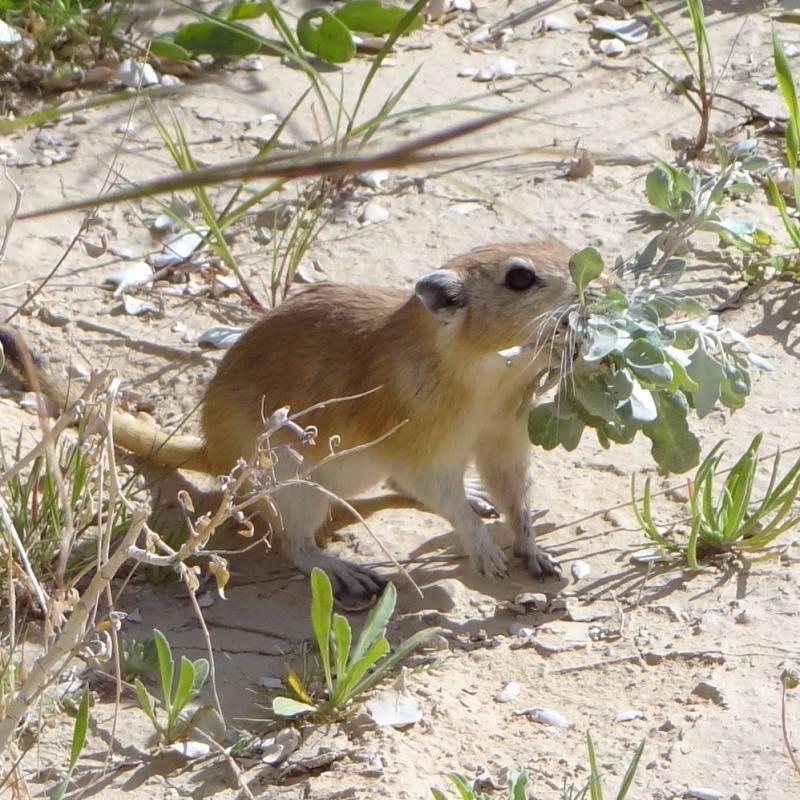
A fat sand rat (Psammomys obesus). Photograph by Livnat Goldberg, n.d.
A fat sand rat (Psammomys obesus). Photograph by Livnat Goldberg, n.d.
 This work is licensed under a Creative Commons Attribution-NonCommercial-ShareAlike 3.0 Unported License.
This work is licensed under a Creative Commons Attribution-NonCommercial-ShareAlike 3.0 Unported License.
The wilderness was largely uninhabited by people, occupied mainly by wild beasts. The only humans to be found there were nomadic desert people and travelers. Sometimes solitude in the desert was a welcome escape from uncongenial company. It might also be a welcoming refuge for outlaws and fugitives. But it was also a place of judgment and desolation. Wilderness could be a place of danger that might close in on people. Once there, a person could be at the mercy of one’s enemies. Dying of thirst was a real possibility, for wilderness was a dry land, subject to scorching winds. Resources like food were also limited, as this was a place more suitable for a solitary hunter-gatherer like Ishmael than for a large band.
In the Bible, the prophets see the future differently, using the desert as an allegory from which people judge their own relations to it. Isaiah prophesies that the desert will become like Carmel, with a forest of low trees. In addition, Isaiah is afraid of the desolation produced by agriculture, which will eventually be replaced by wild plants, and where there were once orchards and crops, a forest will grow that will become a sort of wilderness, or shmama, as one of the wilderness terms above. From another perspective, Jeremiah in 4:26 predicts that Carmel will become a wilderness: “I saw, and behold, the fruitful field became a desert, and all its cities were destroyed because of the Lord, because of His fierce anger.” In a different translation, Jeremiah says: “I beheld, and, lo, the fruitful field was a wilderness …” The future of this forested hillside was to be a desert. He accused the Israelis for not asking, “Where is the Lord, Who brought us up from the land of Egypt, Who led us in the desert, in a land of plains and pits, in a land of waste and darkness, in a land where no man had passed and where no man had dwelt“ (Jeremiah 6:2). Jeremiah, more than all the prophets of Israel, is sensitive to an “awareness of the Desert.” The fear of destroying land and turning it into a desert is his nightmare; and he warns about it: “Many shepherds have destroyed my vineyard, they have trampled my field; they have made my delightful field into a desert waste” (Jeremiah 12:10) employing such “terrible” keywords as Midbar, and their equivalents.
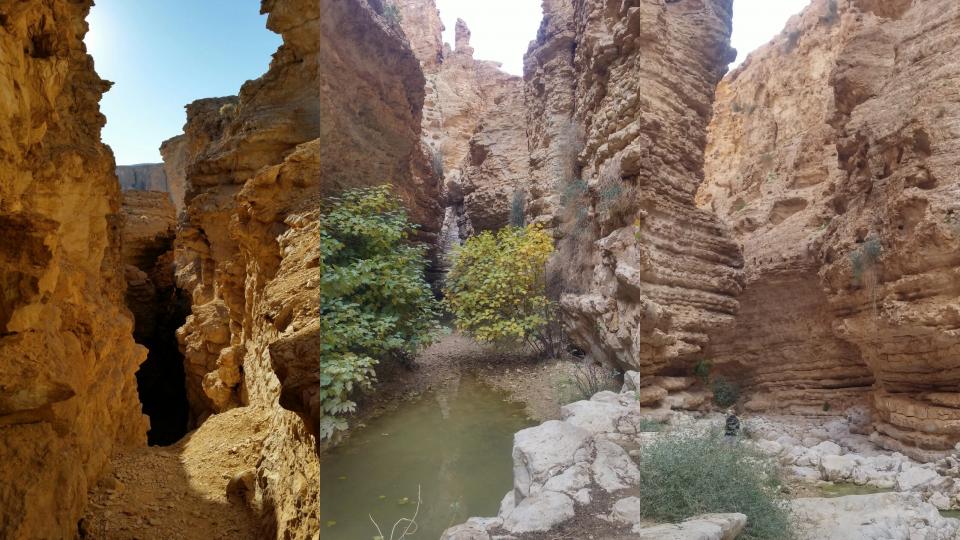
The Hava Wadi. Photographs by Livnat Goldberg, n.d.
The Hava Wadi. Photographs by Livnat Goldberg, n.d.
 This work is licensed under a Creative Commons Attribution-NonCommercial-ShareAlike 3.0 Unported License.
This work is licensed under a Creative Commons Attribution-NonCommercial-ShareAlike 3.0 Unported License.
Today, the existence of wilderness in Israel is under threat. Fragmentation and human settlement are continuously endangering remaining wild areas, while mining and excavation projects are causing irreversible damage to others. Hebrew ideas of wilderness vary from a general notion of the outdoors to a more isolated wild place with little human intervention. Green movements and local residents’ associations have become stronger for protecting these areas and building awareness and appreciation for these areas.
What does wilderness mean in your language? Browse “Wilderness Babel” via the map.
Live map showing the location of the languages featured in the virtual exhibition. What does wilderness mean in your language? Browse “Wilderness Babel” via the map.
- Even-Shoshan, Avraham. The Even-Shoshan Dictionary. Jerusalem: Hôṣā'at “Qiryat-sēfer,” 1979.



